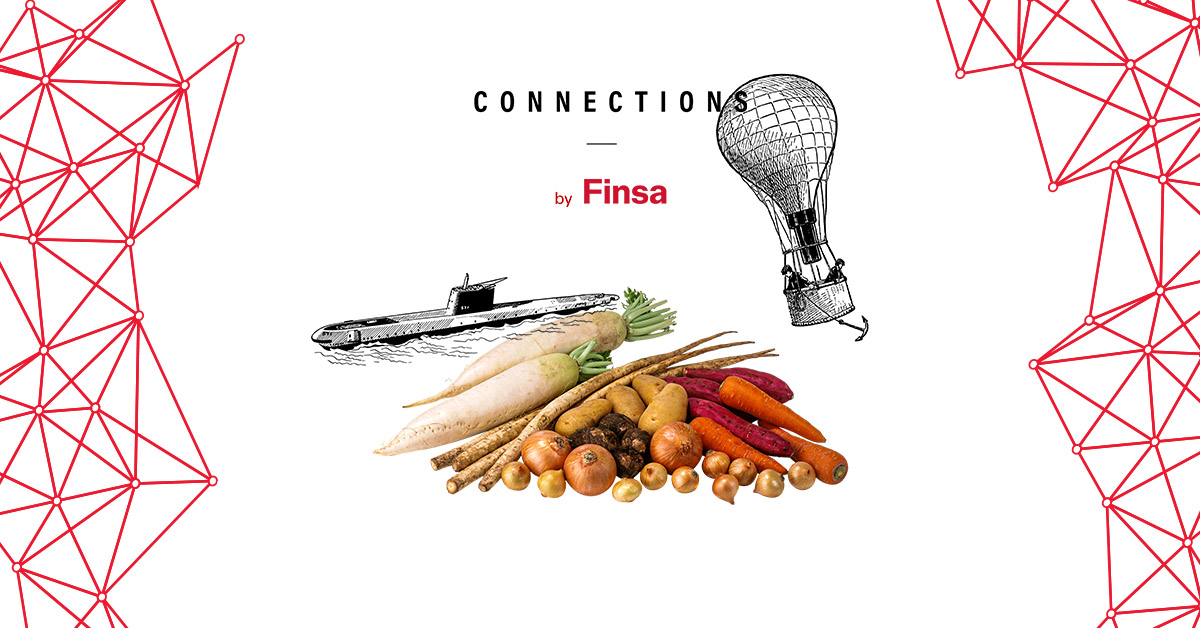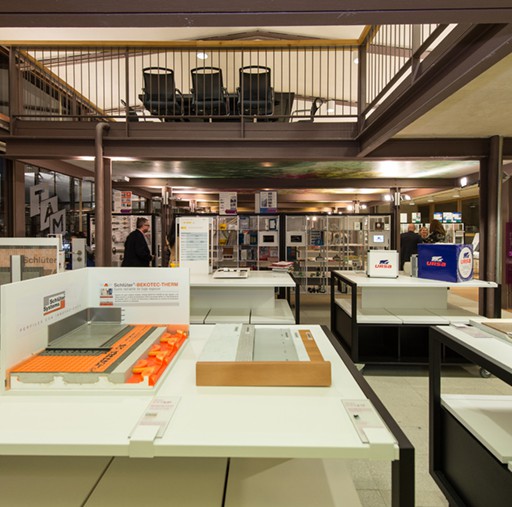The climate crisis is sharpening our ingenuity. It is urgent to use it, moreover, because its effects are becoming more and more intense. Faced with this emergency scenario, our planet needs to respond to what is considered one of the great challenges of this century: the production and distribution of food on sustainable basis, without large farms occupying huge areas of land, without generating pollution, with modern systems that manage to dispense with the use of land for cultivation and allow water and energy to be saved.

Flying and underwater gardens
It is in this context that flying and underwater gardens are emerging, innovative greenhouses whose futuristic design and technology make them look like something out of a science fiction film.
However, they are getting closer and closer to becoming a reality. Some projects, in fact, are already underway in the experimental phase and with very good results. It is the new revolution in agriculture.
Aeroponic 2100: vertical agriculture aboard zeppelins
The impressive aerial gardens are the work of the New York McheilehStudio, whose website already warns that they are dedicated to making ”distinctive architecture” with “a unique environmental approach”.
They propose to create a fleet of zeppelins that house vegetables and fruit gardens inside and are capable of travelling to any point on the globe where fresh food is needed. The project, called Aeroponic 2100, has won second prize in the Redesign the World competition, by the architecture and design magazine Dezeen, which aims to find new ideas that will help keep our planet habitable in the future.
Ver esta publicación en Instagram
These greenhouses are designed to combine aerospace technology on the one hand, and aeroponic and hydroponic growing techniques, which do not require soil, on the other. The gardens would be distributed on vertically positioned platforms for harvesting fruit and vegetables and would use filtered rainwater collected from the outer envelope of the blimps and stored to feed the plants. They could also capture water from the sea and desalinate it for irrigation. They would not pollute – solar and wind energy would be their fuel – which would eliminate, in addition to pesticides, the CO2 emissions generated in transport.
Ver esta publicación en Instagram
Indeed, mobility is the key element of this design. Zeppelins are mobile and would facilitate the transport of any food to any corner of the world, from remote and inhospitable areas to regions affected by natural disasters, war, drought and famine. In fact, Aeroponic 2100 is designed as a 100% modular system, with the largest airships being used to supply cities, while the smaller ones would be used to supply rural areas.
Nemo’s Garden: flying bubbles for growing crops underwater
Flying gardens have yet to take shape. More tangible are underwater gardens. This alternative agricultural system has already taken its first steps in Italy, in the bay of the medieval town of Noli, 60 kilometres from Genoa.
The pilot project is called Nemo’s Garden and consist of growing crops such as strawberries, lettuce, tomatoes or basil in transparent capsules or bells submerged at a depth of between 5 and metres, wich are filled with air underwater and, once anchored, float.
These bubble-like underwater greenhouses or biosphere are the brainchild of Sergio Gamberini, owner of the Ocean Reef Group diving equipment Company (yes, the one that partnered with Decathlon to design and manufacture the famous Easybreath snorkelling mask), which is behind the initiative.
Ver esta publicación en Instagram
It was during a holiday in 2012 that the idea of growing plants under water began to take shape in his head, taking advantage of the sea’s constant temperature and high concentrations of carbon dioxide, characteristics that would create the right environment for plants to grow at a faster rate.
“This system would be especially useful in countries lacking fresh water, soil and stable temperaturas, which represent half of the planet”, said Gamberini. He put his idea into practice and now Nemo’s Garden has successfully passed its experimental phase and is focusing on the large-scale industrialisation of this technology, which already has a reduced version for installation in saltwater or freshwater aquariums at home (a fully functional mini-sphere with basic elements – seed pots, substrate and anchoring – and instructions for growing vegetables underwater) and which has also aroused the interest of pharmaceutical companies: Some are already renting these biospheres to use as underwater laboratories for testing and experimenting with different plants.
Ver esta publicación en Instagram
Made from acrylic material, these underwater gardens are the right size for a diver to enter, plant fruit and vegetables in situ and care for them. The bubbles also carry sensors, fans, cameras, Wi-Fi and all the telecommunications equipment needed to remotely monitor and control what happens inside and outside them.
Everything is self-sustainable and environmentally friendly. The air inside is kept warm, with an average temperature of 17 degrees in winter. There are no parasites either, so there is no need to use pesticides or other chemicals to grow the plants, whose roots receive the necessary nutrients to develop on the mineral solution itself or in a substrate made of sand, gravel, pumice stone or tezontle, a red rock of volcanic origin.
Floating greenhouses for saline agriculture
Still in development is the innovative floating garden architecture proposed by the N-ARK studio, based in the city of Hamamatsu, Japan, to solve the problems caused by rising sea levels in the area and the increased salinity of coastal soils due to flooding. The project is called Green Ocean and they have already created a prototype that combines greenhouse crops with so-called “saline agriculture”, a method that uses seawater as a direct source of nutrients for vegetables.
Ver esta publicación en Instagram
Underground gardens: lushness despite the freezing cold
Remember the movie Mars (Ridley Scott, 2015) when astronaut Mark Watney, played by Matt Damon, is marooned on the red planet and is able to survive waiting for rescue by growing potatoes using his own excrement as fertiliser? Well, this is not science fiction: a study by the International Potato Centre in Lima, Peru, and NASA that replicated “Martian” atmospheric conditions and used soil from the Atacama Desert in Chile confirmed that the tubers could indeed grow in such a hostile environment. Vegetable gardens flourish on Earth, even in extreme conditions.
This is the case of walipini, a word of Aymara origin that means “warm place” or “very good”. And it is true that inside these ingenious underground vegetable gardens, originally from Bolivia, it is like this. Few plants can survive the harshness of the altiplano, its impossible climate, with hot days and freezing nights, strong winds and little water even when it rains, something that happens for only three months of the year. Unless a paradise of mild temperatures is created underground.
Thus, in the midst of an arid, sepia landscape, these half-buried greenhouses, with their rudimentary appearance and roofs almost at ground level, hide a brilliant green of vegetables and greens. They are an economical and highly efficient alternative for fresh vegetables and have little environmental impact. Their design optimises the water and thermal regime. The ivy that usually covers their walls helps to retain humidity and minimises irrigation and the energy provided by the subsoil itself makes the interior feel very comfortable, warm in winter and cool in summer.
Ver esta publicación en Instagram
Oases that are not a mirage
On the other side of the world, in the Algerian Sahara, in the arid region of El Oued, the dunes have given way to vegetable gardens where potatoes, tomatoes, peanuts and onions are grown. They also grow dates and olives.
How do they do it? They draw water from a water table to hydrate the plots, which they surround with palm trees, creating a kind of microclimate inside. The palms, by the way, are planted several metres deep, close to the top layer of groundwater, giving the roots access to water without depending on irrigation or rainfall. They do this using an ancestral method such as ghout, a sustainable technique adapted to desert cultivation and protected by the FAO (Food and Agriculture Organisation of the United Nations).
Ver esta publicación en Instagram
From the United Arab Emirates (a country that still imports 80% of its agricultural products) comes the agribusiness Pure Harvest Smart Farms, which uses the latest sustainable farming technologies to produce different varieties of fresh tomatoes, green leafy vegetables and even strawberries in the middle of the desert.
The emerging firm is a pioneer in controlled environment agriculture (CEA – on its website they claim their plants live year-round in a Mediterranean climate and are protected naturally, by bumblebees, not chemicals) and has received the Product of the Year 2023 award in the Gulf region.
Ver esta publicación en Instagram
Ver esta publicación en Instagram
How can we contribute from the habitat to create the supply systems of the future? Do not miss our curation with four examples of urban gardens.




